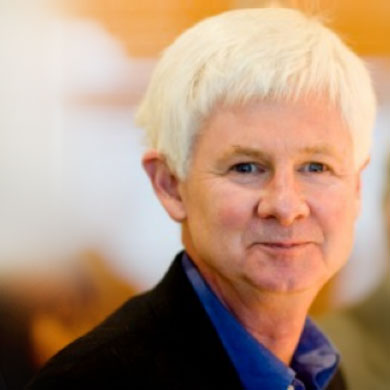
Researcher Profiles

Kevin Shannon, M.D.
University of California San Francisco
2015 Grant Recipient
In Vivo Functional Analysis of Chromosome 7q22 Deletions in MDS
Basic Science Research Grant 2015
PROJECT SUMMARY
The bone marrow can be viewed as a precision tools factory that produces the correct numbers of red blood cells, white blood cells, and platelets throughout life. This complex task is dependent on growth factors and other molecules that act upon hematopoietic stem cells (HSC) to control their division and maturation. When the gene mutations that cause myelodysplastic syndrome (MDS) occur in a HSC, it takes over the bone marrow and can no longer make normal mature blood cells. This fact explains why many patients with MDS develop infections, require blood transfusions for anemia, and may have both abnormal bleeding and blood clotting. Some patients with MDS eventually develop acute myeloid leukemia (AML). These AML cells carry the same mutations that caused MDS, and also gain additional genetic alterations. Uncovering the genetic changes that cause MDS, determining how these alterations lead to defective blood cell production, and understanding why some MDS patients develop AML are central questions that we must answer to develop better treatments.
Two major types of genetic alterations contribute to MDS. The first are mutations in genes that regulate blood cell growth and maturation. Applying new technologies for determining the precise DNA sequences of every gene in the bone marrow cells of MDS patients has led to immense new knowledge about the most common and important gene mutations. These genes normally make proteins that play a key role in the normal growth and maturation of bone marrow cells. The new “roadmap” of genes that are mutated in MDS from DNA sequencing studies now allows researchers to probe how these mutations alter blood cell growth and this knowledge will inform new treatment approaches.
The other common type of genetic alteration in MDS cells is loss or gain of an entire chromosome or a very large DNA deletion that removes part of a chromosome. These chromosomal changes are acquired – that is, they are present in MDS cells, but not in the normal tissues of MDS patients. One of the most common chromosomal changes in MDS is loss of an entire copy of chromosome 7 (this is known as monosomy 7) or a deletion of the long arm of this chromosome, which is called del(7q). Since normal cells have two copies of chromosome 7, MDS cells with monosomy 7 lose one copy of all of the genes on chromosome 7 and those with a del(7q) delete many of these genes. Importantly, patients who have chromosome 7 deletions in their MDS cells have an elevated risk of progressing to AML. DNA sequencing studies of bone marrow samples from MDS patients support the idea that loss of one copy of many different chromosome 7q genes together contributes to MDS. Identifying which chromosome 7 genes are essential for normal bone marrow cell growth and maturation is even harder than finding a “needle in a haystack” because the critical gene (or genes) do not have mutations – it might be viewed as “finding hay in a haystack”. A large segment of chromosome 7 called 7q22 is lost very commonly in the bone marrows of MDS patients.
The goals of our Evans MDS project are: (1) to identify genes located within chromosome 7q22 that are important for normal blood cell maturation; (2) to create strains of mice that reflect the chromosome 7q22 deletions in MDS patients; and, (3) to use these mice to investigate how loss of chromosome 7q22 works together with other gene mutations to produce MDS. We used a technique called chromosome engineering to remove over 40 chromosome 7q22 genes in mice. The overall goals of our Evans MDS research project are: (1) to generate mouse strains that can be used by our lab and other researchers to test new treatments; and, (2) to characterize how loss of these 7q22 genes affect the growth of HSC and other blood cells in MDS. Our key accomplishments were: (1) we generated two strains of mice (called 5G2+/del and 5A3+/del mice) lacking one copy of 40 genes located in human chromosome band 7q22 that correspond to gene that are lost in MDS patients; (2) we showed that the HSC of both strains of mice exhibit specific abnormalities that are also seen in HSC from some MDS patients; (3) we observed abnormal red blood cell maturation and anemia in older mice that have lost all 40 7q22 genes; and, (4) in very recent studies, we detected mutations in two different 7q genes called SAMD9 and SAMD9L in rare cases of familial (inherited) MDS that develop in young children. Together, these studies have generated novel strains of mice for MDS research, have shown that loss of 7q22 genes alters HSCs and contributes to anemia and MDS, and provide new insights into how abnormal responses to interferon and other stress responses in the bone marrow might result in MDS. Support from Evans MDS provided critical “seed funding” for an R01 grant that we received from the National Cancer Institute earlier this year to carry this work forward.
